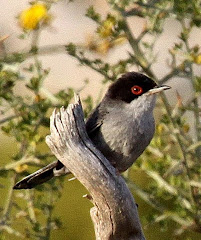
November 10, 2010:
A bird first noticed here on the lake last week has now been identified as a Pied-billed Grebe which is normally found on the American continent. This is the first British record since 2002 and has created tremendous interest with hundreds of bird-watchers coming to see it today and with its presence commented on in the press and on television.

Slightly larger than the common Little Grebe its most obvious difference lies in its much thicker, heavier bill and prominent white eye ring. In summer the white bill has a black vertical band, hence its common name, but in winter the band is much less prominent and the bill can become slightly more yellowish. Its chin, although black in summmer, becomes white in winter.


The very strong sunlight and background reflections on the calmer water made photography difficult when carried out in certain directions


The bird occupied a small sheltered lagoon at the southern edge of the lake and seemed quite happy there diving for fish. On one occasion when the crowd of watchers became especially large, it took refuge amongst the overhanging branches on the opposite side of the lagoon but soon decided all was safe and came out and carried on diving as normal.

[Hiding from view]

[Habitat, an off-shoot of the main lake]

[Very small part of the large crowd]

(Media van]

[Just one more photo]









































.jpg)
.jpg)
.jpg)
.jpg)
.jpg)
.jpg)
.jpg)



